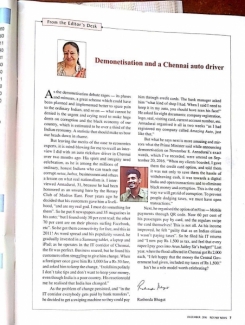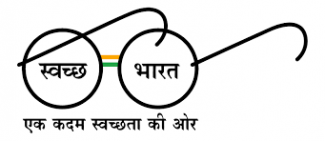
इस समाचार को हिन्दी में पढ़े आगे....
Scientists have developed a portable sterilisation unit using a new technology called the hybrid sterilization system that can decontaminate personal protective equipment (PPE) necessary for combating COVID 19, easily and rapidly, allowing them to be used multiple times.
It can be used by health professionals and other COVID warriors for whom PPEs are essential and can prevent generation of hazardous solid waste from PPEs.
IIT Tirupati (IITT) and IISER Tirupati have jointly developed the Portable Optical Cavity
Sterilization Unit (POSCU) to provide efficient and rapid decontamination of personal protective equipment (PPE) and other household items. A working point-of-use sterilization unit has been developed with the support of Science and Engineering Research Board (SERB), a statutory body under the Department of Science and Technology (DST).
UV radiation is a proven method for sterilization. However, the lower penetration depth of UV-C and faster divergence from the source can result in nonuniform treatment. The team consisting of Dr. Reetesh Kumar Gangwar (Asst. Prof., Physics), Dr. Arijit Sharma (Asst. Prof., Physics), and Dr. Shihabudheen M. Maliyekkal (Asst. Prof., Civil & Environmental Engineering) from IITT have developed this hybrid sterilization system consisting of a UV radiation cavity, cold plasma, and H2O2 spray.
Unlike the traditional UV systems, this unit follows the optical cavity concept to optimize the use of photon flux in the treatment area. The system confines the UV radiation and enhances photon-flux and sterilization efficacy. The coherent operation of UV-C, cold plasma, and H2O2 spray further strengthens the sterilization efficiency due to more hydroxyl radical production.
Dr. VasudharaniDevanathan from IISER Tirupati will assist the IITT team in evaluating the sterilizing efficiency of the portable unit. Dr. R. Jyaprada (MD Microbiology), SVIMS hospital, Tirupati, will also test the system's effectiveness in the SVIMS microbiology laboratory.
The team is currently optimizing the design parameters, including UV dose, plasma, and H2O2 concentration, to get the optimum sterilization performance in short contact time of less than 2 min. Due to the non-thermal nature of the treatment, the proposed unit shall also find application in the sterilization of other items such as packed and unpacked food, currency, and other household items.
For more details, please contact: Dr. Reetesh Kumar Gangwar, IIT Tirupati, Email: [email protected], Mob: 8018119014
नई हाइब्रिड जीवाणुशोधन तकनीक का उपयोग करते हुए छोटी जीवाणुशोधन इकाई पीपीई किट को तेजी से संक्रामक रोगाणुओं से मुक्त कर सकती है
वैज्ञानिकों ने हाइब्रिड (संकर या मिश्रित) जीवाणुशोधन प्रणाली नामक एक नई तकनीक का उपयोग करते हुए छोटी जीवाणुशोधन इकाई विकसित की है जो कोविड-19 का आसानी से और तेजी से मुकाबला करने हेतु आवश्यक व्यक्तिगत सुरक्षा उपकरण (पीपीई किट) को संक्रामक रोगाणुओं से मुक्त कर सकती है, जिससे इसका कई बार आसानी से उपयोग किया जा सकता है।
इसका उपयोग स्वास्थ्य पेशेवरों और अन्य कोविड योद्धाओं द्वारा किया जा सकता है जिनके लिए पीपीई आवश्यक हैं और साथ ही पीपीई के रूप में जमा हो रहे खतरनाक ठोस कचरे को भी रोका जा सकता है।
भारतीय प्रौद्योगिकी संस्थान तिरूपति (आईआईटी-टी) तथा भारतीय विज्ञान शिक्षा और अनुसंधान संस्थान, तिरूपति (आईआईएसईआर-टी) ने मिलकर छोटा ऑप्टिकल कैविटी विकसित किया है।
यह जीवाणुशोधन इकाई (पीओएससीयू) व्यक्तिगत सुरक्षा उपकरण (पीपीई) और अन्य घरेलू वस्तुओं का कुशल और तेजी से परिशोधन में महत्वपूर्ण भूमिका निभाएगी। विज्ञान और प्रौद्योगिकी विभाग (डीएसटी) के तहत की सांविधिक निकाय, विज्ञान और अभियांत्रिकी अनुसंधान बोर्ड (एसईआरबी) के सहयोग से यह जीवाणुशोधन इकाई विकसित की गई है।
जीवाणुशोधन के लिए यूवी विकिरण एक सिद्ध विधि है। हालांकि, यूवी-सी की कम वेधन क्षमता और स्रोत से तेज विचलन से असम निर्वहन हो सकता है। इस टीम में आईआईटीटी के डॉ. रीतेश कुमार गंगवार (सहायक प्रोफेसर, भौतिकी विज्ञान), डॉ. अरिजीत शर्मा (सहायक प्रोफेसर, भौतिकी विज्ञान) और डॉ. शिहाबुद्दीन एम. मलियेक्क्ल (सहायक प्रोफेसर, सिविल और और पर्यावरण अभियांत्रिकी) ने मिलकर एक यूवी विकिरण केविटी, शीत प्लाज्मा और H2O2 स्प्रे को मिलाकर इस संकर जीवाणुशोधन प्रणाली को विकसित किया है।
पारंपरिक यूवी प्रणाली के विपरीत, यह इकाई उपचार क्षेत्र में फोटॉन फ्लक्स के उपयोग को अनुकूलित करने के लिए ऑप्टिकल कैविटी अवधारणा का अनुसरण करती है। प्रणाली यूवी विकिरण को परिभाषित करती है और फोटॉन-फ्लक्स तथा जीवाणुशोधन के प्रभाव को बढ़ाती है। यूवी-सी, शीत प्लाज्मा, और H2O2 स्प्रे का सुसंगत संचालन अधिक हाइड्रॉक्सिक रेडिकल उत्पादन के कारण जीवाणुशोधन दक्षता को मजबूत करता है।
आईआईएसईआर, तिरुपति की डॉ. वसुधराणी देवनाथन इस छोटी इकाई की जीवाणुशोधन दक्षता का मूल्यांकन करने में आईआईटीटी टीम की सहायता करेंगी। डॉ. आर. जयाप्रदा (एमडी कीटाणु-विज्ञान विभाग, एसवीआईएमएस अस्पताल, तिरुपति) एसवीआईएमएस कीटाणु-विज्ञान प्रयोगशाला में प्रणाली की प्रभावशीलता का परीक्षण भी करेंगी।
टीम वर्तमान में 2 मिनट से भी कम समय के लिए संपर्क में आने पर अधिकतम जीवाणुशोधन दक्षता प्राप्त करने के लिए यूवी खुराक, प्लाज्मा और H2O2 मिश्रण सहित डिजाइन मापदंडों का अनुकूलन कर रही है। उपचार की गैर-थर्मल प्रकृति के कारण, प्रस्तावित इकाई को अन्य वस्तुओं जैसे कि डिब्बा बंद और बिना बंद भोजन, मुद्रा और अन्य घरेलू वस्तुओं की जीवाणुशोधन के उपयोग के लिए भी खोजेगी।
अधिक जानकारी के लिए, संपर्क करें: डॉ. रीतेश कुमार गंगवार, आईआईटी तिरूपति, ईमेल: [email protected], मोबाइल: 8018119014











